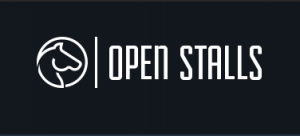Client Context
Open Stalls is an online reservation booking and management platform for rodeo related events and arenas. I began Product Management for this service in November 2020.

Discovery Process
Market
Rodeo industry arenas, events, and venues.
User Segments
Internal Stakeholders:
- Implementations and integrations team
External Stakeholders:
- Renters
- Event Administrators
User Problems
- During events, renters are parking miles away from the arena, and being verbally instructed on location. Not enough staff to manually walk people or golf cart people to their locations.
- Renters seem to know where the stall office is and walk towards it. Venues have expressed interest in more Self-Service on the renter side because they won’t have staff at the stall office.
- Renters will be looking at multiple venue maps over time, they might prefer some consistent styling on what they’re looking at
- Venues are providing inconsistent map types. Some are google maps with overlays, some are brochure quality, some look like a grid made in excel.
- Venue Operations team doesn’t know location of stalls to lock when people are overstaying
- Operations / Event Support doesn’t know the layout of every venue when travelling for Event support.
- For Developing a map tool internally, we’d have to consider Scale and Dimensions
- Renters need to know ADA compliance of areas
Problem Oriented Features
- Send SMS of direct google maps link with specific coordinates to user for their Barn and RV locations
- Send SMS of direct google maps link to operations users with specific coordinates for which barn/stall needs to be locked or cleaned
- Build Downloadable and Accessible Venue Maps based on true dimensions, scale, and size of the venue – clear information to user
- Add place markers for Warm Up Arenas and other information that’s not as readily viewable on a PDF
- Provide Map KML file to Venue as a Service unique to Open Stalls
Proposed solution:
We can generate the Venue Maps using Google My Maps. This service is free to use, and directly integrates with Google Maps, and provides a solution for each described user problem and problem oriented feature concept.
This also allows us to send google map links to renters, operations users, and admins so they can get the specific coordinates of locations and leaves less ambiguity.
It enables future ideas like using Bluetooth repeaters and auto locking stalls too. Having accurate understandings of coordinates becomes a sellable feature of Open Stalls for future business development, and can apply to multiple market segments outside of simply Rodeo.
Proposed Implementation & Demo
PoC – Tri County Expo Example – https://www.google.com/maps/d/viewer?mid=1xaQs9lZubhLYHouby0MhKadSpMoLwTfU&usp=sharing
Tradeoffs
I’ve noticed an average set up time of about 1-1.5 hours for all the details, including QC time. We’d have to do this one time and save it and export the KML file with the details. This would require integrations and implementations work on the side of our company.
The KML file will need to be updated as the venues require temporary stalls, barns, etc locations. There will be maintenance work.
This is a partner decision, to use an existing service provided by a 3rd party. We are dependent on the continued support of this service by Google.
Risk Assessment Definitions
https://svpg.com/four-big-risks/
- value risk (whether customers will buy it or users will choose to use it)
- usability risk (whether users can figure out how to use it)
- feasibility risk (whether our engineers can build what we need with the time, skills and technology we have)
- business viability risk (whether this solution also works for the various aspects of our business)
Risk Assessment of PoC
https://svpg.com/four-big-risks/
- value risk
- Low Risk
- I see potential for high value to clients: a true Google Map for them to use indefinitely onward, specific geo-coordinates for their users, and this is a trainable feature. There’s a UI and no dev work to generate the file.
- usability risk
- Medium Risk
- There is some complexity at onboarding: becoming familiar with the map layers, the iconography. At present, we trained several staff how to draw the basic shapes, but there is a need for QC and approval on the map generation process. That said, this type of program has a medium to low usability risk: it is Google Maps, and in general people are comfortable with Google Maps as a program.
- feasibility risk
- Low Risk
- This does not require dev time to generate a map. We should consider the QC aspect on the usability side, but feasibly a KML document is just like an XML document, and would provide all the Inputs that dev needs to create the Outputs and integrate with the existing Google Maps API – huge win for dev, huge win for Product Design.
- business viability risk
- Low Risk
- This is a highly requested item – interactive maps – and one of the major considerations for winning out over SaddleBook as our competitor